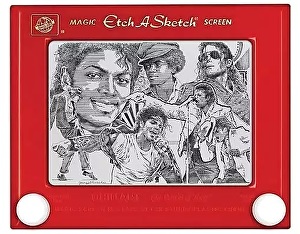by Luann Udell
This post is by Luann Udell, regular contributing author for FineArtViews. She’s blogged since 2002 about the business side–and the spiritual inside–of art. She says, “I share my experiences so you won’t have to make ALL the same mistakes I did….” For ten years, Luann also wrote a column (“Craft Matters”) for The Crafts Report magazine (a monthly business resource for the crafts professional) where she explored the funnier side of her life in craft. She’s a double-juried member of the prestigious League of New Hampshire Craftsmen (fiber & art jewelry). Her work has appeared in books, magazines and newspapers across the country and she is a published writer.
Sometimes it’s tiny adjustments that bring about desired outcomes.
I’ve written a series of articles on my blog about the conversations I overhear while working out at the gym.
This isn’t quite the gym you’re thinking of. The physical therapy group I use also provides an independent gym program: When a client completes their physical therapy plan of care, they can chose to continue using the facility’s equipment on their own. I follow an exercise plan created especially for me by their PT or athletic trainer. The advantages are, it’s inexpensive, I receive continued monitoring by the staff, I get regular updates to the exercise plan, and I’ve found wonderful social connections. I love these guys! (Er…I’m from the Midwest, so “guys” means men AND women.)
Many of the articles in this gym series are insights I’ve gained from overhearing remarks and conversations between therapists and clients. (I never reveal health issues, therapy, nor treatment, not even the gender of those involved.) These observations spawn many “aha!” moments in my growth as an artist.
I’ve also watched many young people, people who want to pursue physical therapy, observing and ‘shadowing’ the therapists, accumulating hours for their own degree programs in this field. I love to ask each one of these observers, at the end of their time, a simple question:
“What is the most surprising thing you’ve learned from your observations here? Something you did not, or could not learn or observe in the classroom?”
Surprisingly (or not!), every single person has learned something different.
The most recent observer noticed two things, and today’s article is about her first “surprise”.
They watched one therapist working with a client. The client tried an exercise the therapist had given them, to help restore strength and function to a weak muscle. The therapist watched and then said, “Okay, when you do this exercise, you need to rotate your foot slightly, to here (gently repositioning the foot) to target this specific muscle we’re working on. Otherwise, you’re engaging and working a different muscle, and you won’t gain the results we need.”
I asked the student why that was surprising. They replied, “I had no idea that such tiny adjustments could alter the outcome of the therapy.”
What a subtle observation! I have no doubt this young person will become an excellent therapist in the years ahead.
How does this relate to artists? So glad you asked!
To start with, keen observation is the very heart of an artist. There is something we “see” in the world around us, whether it’s a beautiful landscape, the way whiskers in an animal portrait catch the light (from a comment by a reader a few weeks ago!), the colors we hope to capture in a vessel’s glaze. A split second of action, or the deep emotion of the moment we hope to freeze in a photograph. The intoxicating aroma of a new perfume, or the feel of a handwoven shawl, the tacit feel of a hand-carved object. All these are tiny details, aspects of the world we notice that many do not. These details are the things we yearn to recreate, or capture, or echo in our own work. Then our mission, and hope, is to share these observations with an audience.

Yep. I’m that person at the ocean, looking at…..rocks. Every. Single. Rock.
Then there is the power of those tiny details in our work. These details are exactly what my audience loves about my work: How it looks, how it feels, are all small pleasures they experience, and enjoy. Every one of you has something, often tiny, often overlooked, that you pay deep attention to, to help you connect YOUR work with YOUR audience, too.
There are the tiny skills we acquire, sometimes over years, sometimes over a lifetime—how to utilize an ordinary pencil to its deepest purpose, to recreate a three-dimensional object, or an intricate pattern, a shadow, or a splash of light. Something most people use (if ever) for their shopping list hanging on the fridge, becomes a powerful tool in the hands of an expert. And the same for manipulating paint, paper, clay, metal, fiber. If you’ve ever watched a potter centering clay, then pulling up a form, you know the magic of what looks like the clay forming itself into a beautiful shape. It looks so effortless, yet if you’ve ever tried it yourself, you immediately appreciate the incredible skill and interplay of arms, hands, fingers needed to get it just right.
We use another set of tiny skills in the ways we let the world know what we’ve made. Advertising, marketing, doing shows, open studios, demonstrations, word-of-mouth, business cards, are all ventures comprised of a million tiny, individual, focused decisions, actions, and steps. Don’t we know it! From deciding which images to use in our self-promotions to what shows and galleries we should consider, all break down into very tiny steps: Researching that gallery online. Visiting that show. Posting our work on social media. Filling in our calendar with deadlines. Skip some of these tiny steps and skills, and you may end up spending a lot of time and money on a show that does absolutely nothing for your art business. Just like my column on why our work costs so much, for every hour we spend “on the stage”, there are thousands of hours, spent on just as many teensy tiny tasks that helped us get there.
Is social media become a daunting task for you? I’ve learned that simply posting a single image (and comment) to Instagram is a tiny, efficient way to keep my work in the visual stream. I’ve set up my account to repost to Facebook and Twitter. My blog is set up the same way. I may not have the time to devote hours to social media daily, nor do I want to. But this is a very small effort that feels rewarding.
We know the power of committing some small part of our day to the service of our art, every day. It’s so easy to look at our to-do list, and promise to do our work “tomorrow”. But very tiny adjustments can help. Just as simply putting on our gym shoes can help us be more vigilant about exercising, I find that setting something I need to take to my studio (a piece of fabric, a string of beads, a half-finished artifact) on the kitchen counter the night before helps solidify my plans for the day.
And last but not least, very tiny revisions to how we approach customers can create great changes in our connections.
We now know that the greeting, “Can I help you?” will be usually be met with a “No, thank you, just looking.” While the greeting, “IF I can help you, just let me know!” will be met with a heartfelt, “Why, thank you!!” and the visitor digging in for a really GOOD look.
We know that saying, “It took me 39 years to make that pot!” may get a laugh, but not a connection. But saying, “As a child, I was very close to my mother, who was a potter, and I used to sit and watch her in the studio while she worked. I’ve been fascinated with clay ever since, and I’ve been working with it for over forty years. And when I make a beautiful pot, I think of her…..” may start a rich conversation.
We’ve learned to identify the questions that deserve a good answer, and the ones that really don’t. We know how to tell the people who are really are our allies, and the people who will never be—and that this is not our fault.
As artists, we all know the power of those very tiny adjustments can make all the difference in ourselves, our art—and the world.





